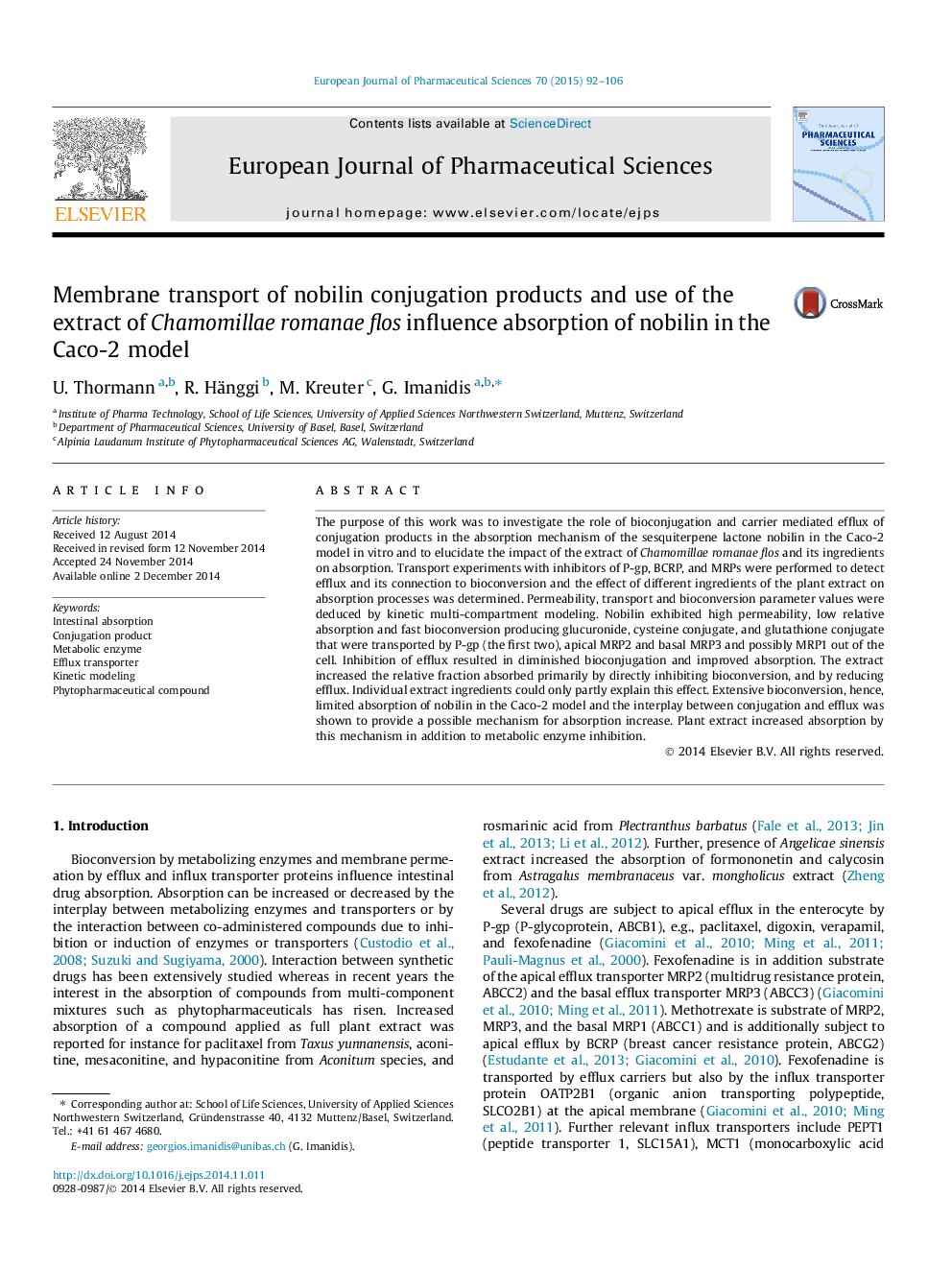| Article ID | Journal | Published Year | Pages | File Type |
|---|---|---|---|---|
| 2480331 | European Journal of Pharmaceutical Sciences | 2015 | 15 Pages |
The purpose of this work was to investigate the role of bioconjugation and carrier mediated efflux of conjugation products in the absorption mechanism of the sesquiterpene lactone nobilin in the Caco-2 model in vitro and to elucidate the impact of the extract of Chamomillae romanae flos and its ingredients on absorption. Transport experiments with inhibitors of P-gp, BCRP, and MRPs were performed to detect efflux and its connection to bioconversion and the effect of different ingredients of the plant extract on absorption processes was determined. Permeability, transport and bioconversion parameter values were deduced by kinetic multi-compartment modeling. Nobilin exhibited high permeability, low relative absorption and fast bioconversion producing glucuronide, cysteine conjugate, and glutathione conjugate that were transported by P-gp (the first two), apical MRP2 and basal MRP3 and possibly MRP1 out of the cell. Inhibition of efflux resulted in diminished bioconjugation and improved absorption. The extract increased the relative fraction absorbed primarily by directly inhibiting bioconversion, and by reducing efflux. Individual extract ingredients could only partly explain this effect. Extensive bioconversion, hence, limited absorption of nobilin in the Caco-2 model and the interplay between conjugation and efflux was shown to provide a possible mechanism for absorption increase. Plant extract increased absorption by this mechanism in addition to metabolic enzyme inhibition.
Graphical abstractFigure optionsDownload full-size imageDownload high-quality image (86 K)Download as PowerPoint slide
